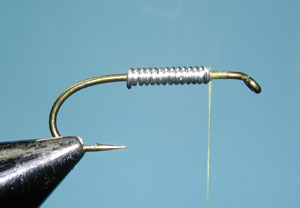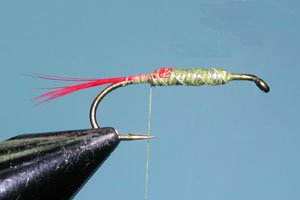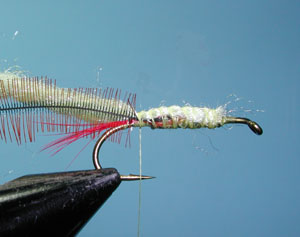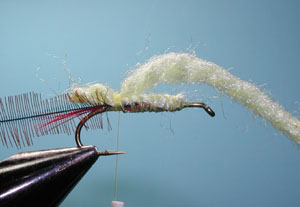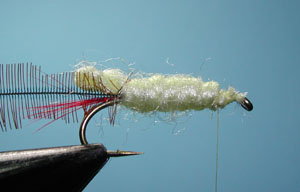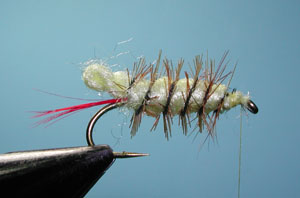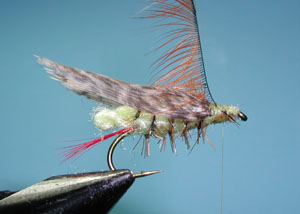Joe’s Hopper
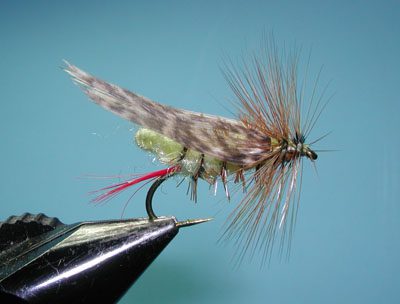
Joe’s Hopper
Tying Instructions
| Materials
to Order Material, click the link |
|
|---|---|
| Hook | TMC 5212 |
| Thread | Danville Yellow 6/0 |
| Body | Yellow poly yarn |
| Ribbing | Brown Hackle, palmered, trimmed short and tapered |
| Tail | Red hackle fibers |
| Wing | Mottled Turkey wing quills, Treat with Flexament |
| Hackle | Brown and Grizzly hackle |

Joe’s Hopper
Developed by Art Winnie of Traverse, Michigan in the early 1940’s. It was known as the Michigan Hopper but evolved into the name of Joe’s Hopper by the 1950’s. It was a popular hopper pattern for Joe Brooks, hence the name, and the pattern is not much different than the original tied by Art Winnie.
This fly was a forerunner to Dave Whitlock’s Hopper. Joe’s Hopper can be fished as a dry fly but it is often fished as a wet fly when it is weighted. Fish the fly within riffles during the hottest part of the day. Also use the fly along undercut banks and deep pools. During periods of hatching, a weighted Joe’s Hopper will not work well. However, during a lack of nymphal activity, a weighted Joe’s Hopper can become the fly of choice.
Gary LaFontaine was a strong proponent of Joe’s Hopper. He preferred the weighted variety and would wade upstream presenting a drag-free drift. He found that size and color played a primary role in trout selection. The trout would prefer the most abundant mature hopper in a particular size and color available on the stream. Larger hoppers might be available but they would be ignored by the trout. Gary also liked to utilize a skip cast and a carom splash off the banks. He tried to minimize the use of the loud splat presentation since it would often frighten the fish.
Since the hopper has been around for a while there are many current variations. One is to apply a foam butt to the fly just above the red hackle rather the the extended yarn body.

